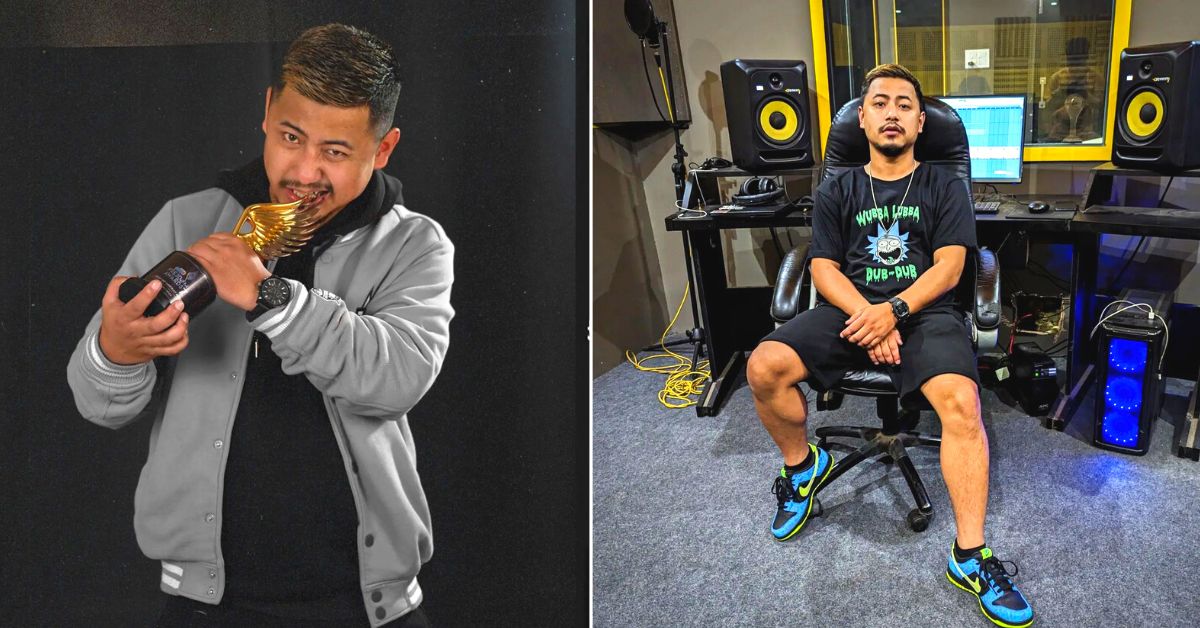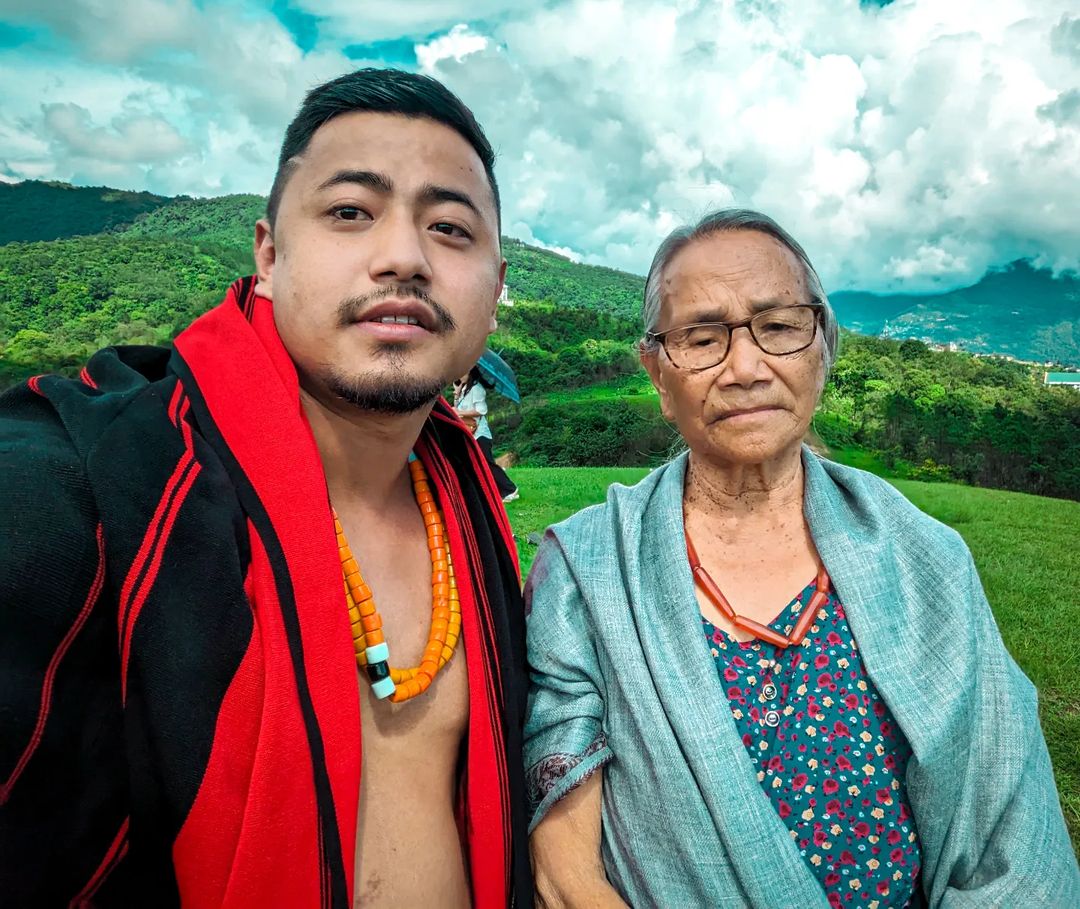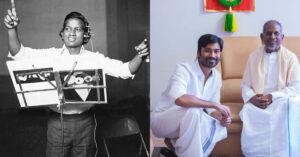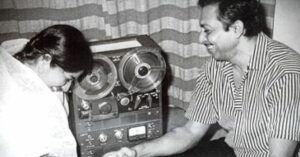Nagaland’s Biggest Rapper Moko Koza Chose Hip Hop Over MBBS To Speak for His People
Moko Koza, Nagaland's leading Hip Hop artist shares why he sings about the trials and tribulations of the indigenous Naga people, their history and their stories.

Mvüko Koza, a Kohima-based multilingual recording artist and songwriter, who popularly goes by Moko Koza, has never been afraid to express his Naga identity and represent his people.
Standing at the forefront of Nagaland’s young Hip Hop community, Moko uses his music and his unique storytelling abilities as a medium to captivate audiences and capture the everyday realities of a people living in an often forgotten corner of India.
Songs like ‘Naga Manu’ — which has racked up nearly 1.9 million views on YouTube and inspired countless reels online, ‘Boy From The Hills’, and ‘Tribally Savage’ are just a few examples of how Moko expresses pride in his indigenous identity, talks about the trials and tribulations of his people and tells their stories.
Belonging to the indigenous Chakhesang Naga tribe, Moko has become a significant voice in the Northeast’s burgeoning Hip Hop scene. This is his story.

‘Hip Hop Just Changed My Life’
Born on 15 June 1996 into “a regular Christian family” in Kohima, Moko Koza grew up in a household where traditional Naga music was a regular feature, alongside six siblings. Hip Hop came into Moko’s life when he was barely nine after listening to iconic rapper Eminem’s ‘8 Mile’ CD.
Speaking to The Better India, he recalls, “There were others like 50 Cent and Ja-Rule who were beefing at the time and putting out music, but the first Hip Hop artist I fell in love with was Eminem. His fearless storytelling, humour and the music itself made me fall in love with this genre. The whole scene was hot and I think I discovered Hip Hop at the right time.”
Growing up, Moko recalls how he was a timid and shy person who was scared to talk in front of people. Hip Hop helped him find his voice. “Hip Hop was like a second father to me. It gave me the confidence to express myself,” he recalls.
Moko was 14 when he wrote his first song and two years later composed and recorded his first song ‘Listen to Your Heart’ on a mobile phone at his grandmother’s place. “The first song I recorded was on a phone. I transferred the audio to a computer and used a software called Virtual DJ where I had to sync the music and audio without any mixing,” he reminisces.
Besides writing songs and making music, Moko was also a good student. After high school, he got into the prestigious Christian Medical College (CMC) in Vellore, Tamil Nadu, to study medicine but turned down the opportunity to study there. He makes a reference to this event in the first verse of his latest single ‘Aji Kali’ which was released earlier this month.
Why did he decide not to pursue medicine from one of India’s leading medical colleges?
He says he didn’t want to leave Kohima. In hindsight, he argues that pursuing his graduation at the Kohima Science College turned out to be a “plus point” in helping him mould his craft as a rapper and performer. “Given the demands of medical school, maybe if I had gone out to study there, I would be a doctor now instead of a rapper,” he notes.
“During college functions, I would always take the opportunity to get on stage and perform because I wanted to do away with stage fright. In the years I spent in college, I would always request my seniors to let me perform on stage and they would give me a chance,” he adds.
In 2017, as he was coming towards the end of his master’s degree in Anthropology, he began performing in front of live audiences and earning some money from it.
“My family has always been supportive of my music. During my college days, I never flunked out, brought bad grades or got held up by ‘back papers’. That allowed my family to trust what I was doing with my life. At the same time, I was making music,” he says.
“In college, making music started as a hobby but soon turned into a passion. In 2017, I performed in front of a live audience and got paid for the very first time. This is how I realised that I can pursue music as a professional career instead of studying, giving exams, and pursuing government jobs,” he adds.
But for any artist starting out, it’s difficult to pay for studio sessions when they can’t afford it. Early on, Moko would borrow money from his mother to pay for these sessions because he didn’t have a proper recording studio at home.
Infinity Inc.
Right after earning his master’s degree in (Physical) Anthropology in 2018, however, he got a call from Asalie Peseyie, the founder of Dimapur-based record label, Infinity Inc.
“I first heard of Moko Koza back in late 2017 after listening to a Nagamese track he released called ‘Puisa’. When I met him for the first time in 2018, I found a fully dedicated and humble individual — two characteristics that have remained constant since then,” says Asalie.
In fact, Asalie was a rapper in the early 2000s and a pioneer of Hip Hop in Nagaland. But frustrated by the lack of a support system, he traded in his mic for other pursuits.
“Infinity Inc. stemmed from my short stint as a rapper earlier in the 2000s. The lack of a support system made it almost impossible for local artists to break out. Of course, social media was not even around at the time. These experiences inspired me to create Infinity Inc. — a springboard for upcoming Naga artists to reach the levels that they are capable of doing. At present, we have four artists, three DJs and two producers who are signed to our label,” he says.
“Ever since I started Infinity Inc. in February 2018, our priority was to sign Moko as an artist. I’ve always appreciated that his art stems from his love of his culture and people and is marked by originality — a rare commodity in artists these days,” adds Asalie.
Meanwhile, Moko remembers the call he received from Asalie following his post-graduation.
“Over the call, Assalie told me how they wanted to sign me as an artist. Without any second thoughts, I signed with them because I wanted to pursue music. Joining Infinity Inc. gave me access to a professional studio with in-house producers and sound engineers who would help me make the music I wanted. From struggling early on to put out music and asking my mother for money to pay for a studio session, today I have access to the tools I need,” says Moko.
Convincing his parents wasn’t hard. “When I told them that I am going with music full-time and moving to Dimapur, they said that I was old enough to make my decisions,” he says.

‘Naga Manu’
Ase emi ekta Naga Manu chokora (First off, I’m a Naga)
D-Block, Kohima town jonom hoa laga jaga (D-Block, Kohima town was where I was born)
Ama laga peth para ula bole time te (As I came out from my mother’s womb)
Naga Manu khoom tu bukhi kena olaisheh (The blood of a Naga has been in me ever since)
Before releasing ‘Naga Manu’ in August 2022, Moko Koza caught the ears of Hip Hop aficionados from around the country with his battle rap songs and cyphers marked by interesting wordplay, flow and cadence. But ‘Naga Manu’ really put him on the map. The inspiration came from his memory of ‘Puisa’, the first Nagamese song he put out, and the good reception it got online.
‘Puisa’, which means money in Nagamese, reflects on how the youth are exhausted by systemic corruption that has afflicted Nagaland for decades. Nagamese is the commonly accepted lingua franca in a state with many tribes that have their own indigenous languages.
“Since the response to Puisa was good, I thought about making more Nagamese songs. Writing and rapping in Nagamese and other dialects has introduced me to a whole new audience, particularly the older generations. When it comes to ‘Naga Manu’, I recognised that not everyone has the voice to speak for the community. As an artist, I have that platform. So, I really wanted to address some key social issues in Nagaland like alcohol prohibition,” explains Moko.
“But if we talk about something very serious, people don’t usually listen. So I thought of bringing in some humour so that people would listen. This helped me establish the concept of the song,” he adds.
The song exposed a whole new audience to Moko’s music and provided some interesting insights into what is going on in Nagaland, particularly on the subject of prohibition. In the song, for example, Moko reflects on how alcohol is prohibited in Nagaland but everyone knows where to find it and how that illegal liquor comes from Assam at the cost of the local economy.
“I really wanted to address the hypocrisy behind alcohol prohibition in Nagaland. Many in Nagaland are asking for prohibition to be lifted, but the church and other civil society groups are coming in strong to oppose it. Ironically, I’ve seen the sons of church members getting drunk,” he notes.
“The funny thing is that the song has anti-government undertones, but at certain functions where I performed the song in front of government officials, they seemed to enjoy it,” he adds.
But the song also makes clear references to the pride Moko feels in his Naga identity and the prejudices that people in mainland Indians harbour against Nagas, including their food habits.
Bahar mannu ki ki kobi etu moi najane (Let people judge us because of our food habits and our ways)
Moi ki khai taikhan la ki jai (What I eat and how I look is none of their business)
Matha kati kena ahya manu asede (We came from a generation of headhunters)
Muikhan Naga manu khan bi kmoti nohoi de (We are all proud to be called a Naga)
‘Boy From The Hills’
In ‘Boy From The Hills’, which was released in September 2023, Moko Koza celebrates his Naga ancestry and speaks of growing from “the soil that was stained by the armies”.
The song draws inspiration from the stories his grandmother told him about the horrors visited upon the Naga people during World War II when the Japanese launched their U-go offensive into India, which led to the epic Battle of Kohima in 1944. As the introduction of the music video notes, “An event that changed the course of world history. An event that tested the resilience of the Nagas. An event that has been famously dubbed ‘The Stalingrad of the East’.”
“When we were children, my grandma would tell us stories about how she grew up during World War II while the British and Japanese soldiers were fighting each other. Most of our stories are passed down orally from one generation to the next. But in this process, they get modified, and sometimes, as a result, the real story doesn’t exist anymore. In this song, I really wanted to get the real story recorded so that it stays on forever and helps the younger generation understand what really happened,” he says.
“Also, as an artist, I also wanted to experiment with new sounds, taking inspiration from our folk traditions. I tried to experiment with it while also taking inspiration from my grandma who recently told me more about these events while I was visiting her,” he adds.
A standout feature of the song is the hook (chorus), which Moko describes as “a lullaby that was sung to us as children by our grandparents.” Sung in Tenyidie, an indigenous language spoken by the Chakhesang Naga tribe, it brings a certain serenity amidst the chaos.
“There are two verses in the song, which are very chaotic — talking about the war and what our people went through. So I wanted the chorus to be very soothing and calm. When the chorus comes in after the first verse, it’s like putting the baby to sleep. You feel that calmness. And then the second verse comes in which talks about the war against the Japanese, which again is very violent and chaotic. This is once again followed by the chorus and the calmness,” explains Moko.
“Initially, I didn’t know what to say in the chorus. It so happened that I was watching a short documentary about Naga folk music when I heard that lullaby. This was perfect for my song. After this, I got in touch with my friend Nourhe Zatsu who sang the chorus,” he adds.
“Like Moko’s grandmother who spoke of her experience of the war in Khezhakeno village in Phek district, my late maternal grandmother also used to narrate stories of when the Japanese troops entered her village of Jakhama. It was a traumatic time in their lives,” explains Asalie.

“I think Moko does a great job of being musically relevant with modern styles yet at the same time staying connected to his roots with the content of his songs,” he adds.
And this feature also appears in songs like ‘Tribally Savage’ which was released last year.
At the end of the music video, Moko makes a reference to the events of 4 December, 2021, when Indian security forces killed 14 innocent civilians from Oting village in Mon district, mistaking them for armed militants. He goes on to make a plea for repealing the draconian Armed Forces (Special Powers) Act (AFSPA), which gives Indian security forces immunity to use force “even to the extent of causing death”. In past interviews, Moko has spoken of wanting to end this cycle of violence which has been going on for more than five decades.
Despite a long-standing ceasefire between the Indian state and armed groups seeking a separate homeland for the Naga people, core political disputes stand unresolved.
Leaving behind a legacy
“When I was starting out, the scene was very quiet. The rappers before us had their own time and then life happened for them. What I found early on was that the older generation wasn’t very receptive to Hip Hop music. They were mostly into rock music and your old classics. But when I made songs in Nagamese and other local dialects, both the youth and the older generation started taking notice of rap music and enjoying it. Never in my life, I thought that Naga people older than 50 would recognise me, but it’s where we are now,” says Moko.
Asalie also hails the impact Moko Koza has made in his career thus far. “With a close connection to his roots and the use of multilingual rap, he has connected with the masses from little kids to elders in remote villages singing his songs. I still feel Moko doesn’t get the due recognition he deserves although he is clearly acknowledged as one of the biggest Naga artists currently.” If you found our stories insightful, informative, or even just enjoyable, we invite you to consider making a voluntary payment to support the work we do at The Better India. Your contribution helps us continue producing quality content that educates, inspires, and drives positive change. Choose one of the payment options below for your contribution- By paying for the stories you value, you directly contribute to sustaining our efforts focused on making a difference in the world. Together, let’s ensure that impactful stories continue to be told and shared, enriching lives and communities alike. Thank you for your support. Here are some frequently asked questions you might find helpful to know why you are contributing?

(Edited by Pranita Bhat; Images courtesy Moko Koza/Instagram)
This story made me
-
97
-
121
-
89
-
167



















